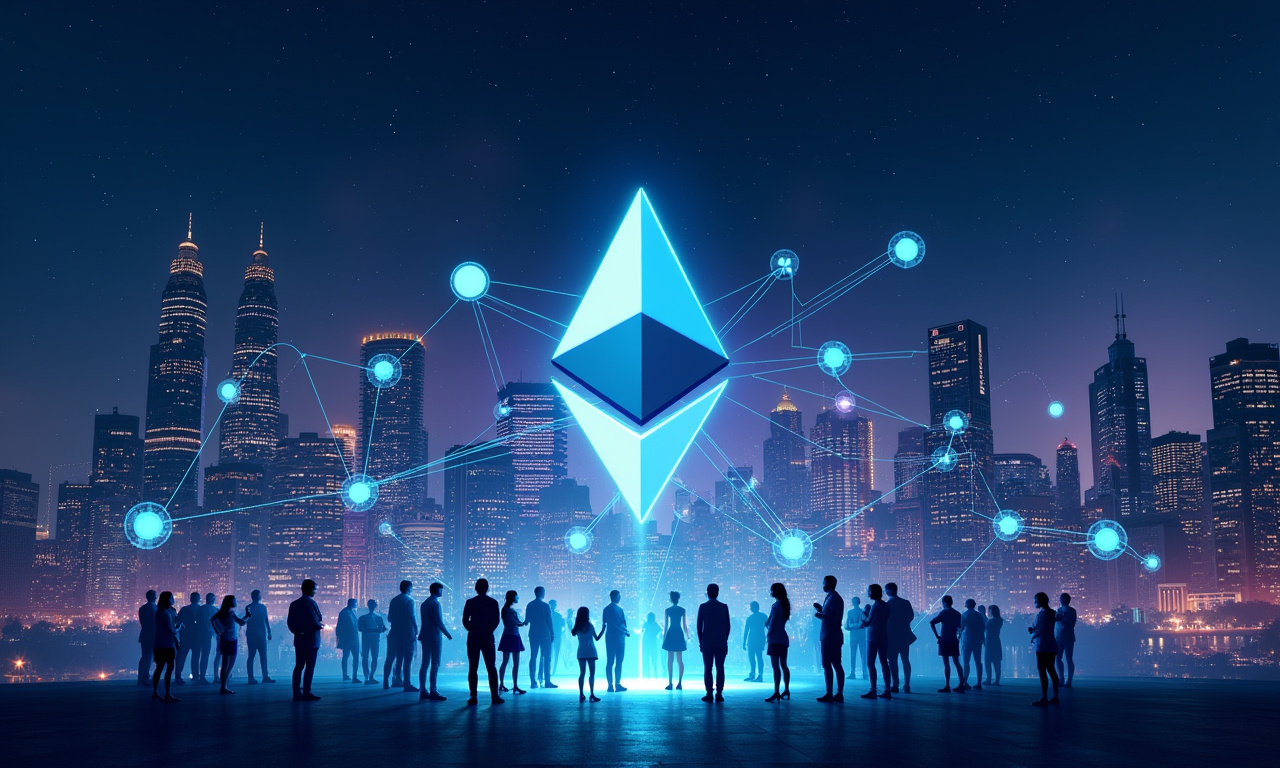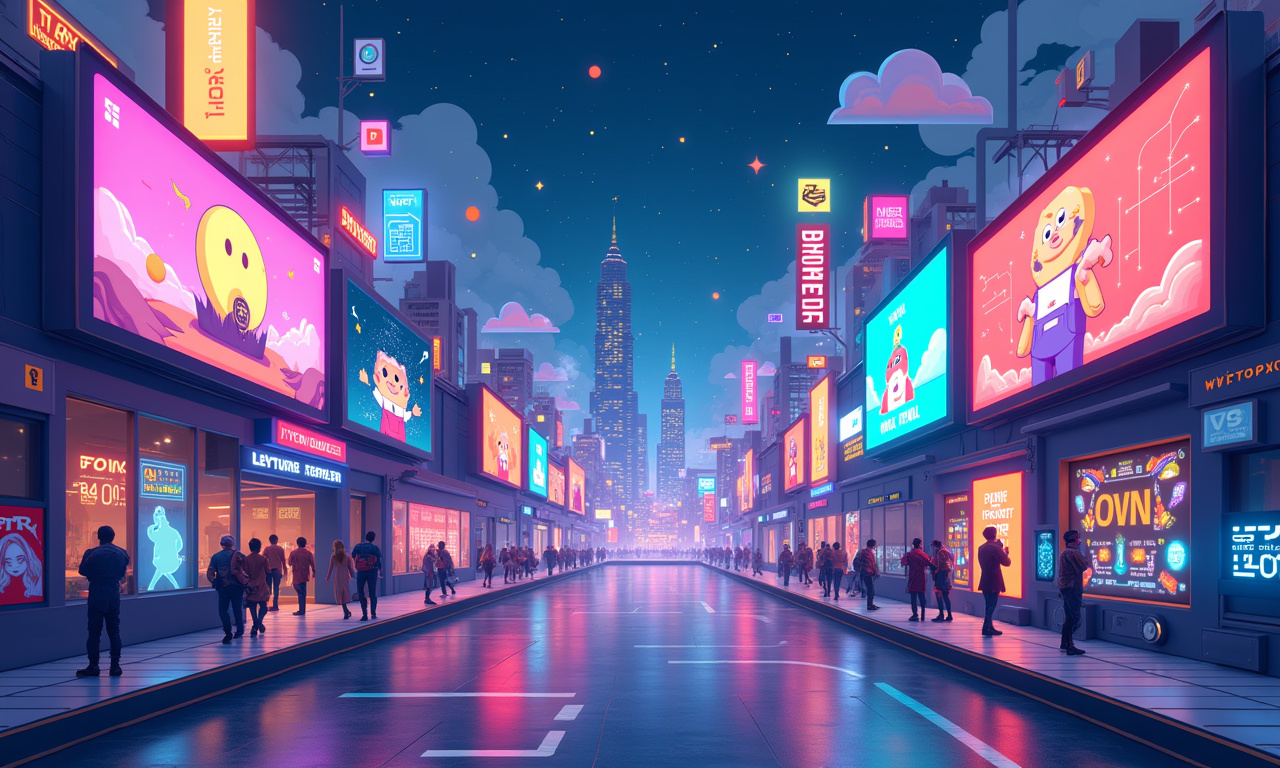A recent high-profile acquisition has the NFT world buzzing: Adam Weitsman, a well-known billionaire, has made a significant investment in Yuga Labs' Otherside metaverse by purchasing over 5,000 NFTs. A lot of people see this as an extremely large vote of confidence for the concept of digital ownership and the potential offered in metaverse spaces. Does it actually mean that NFTs are truly back, or is this just a strategic gamble in an uncertain marketplace? Let’s unpack some of the specifics and take a look at what this all means in the larger context.
Overview of the Billionaire's Acquisition
Adam Weitsman's massive NFT purchase is more than just a headline. It's a strategic play within the evolving landscape of digital assets. Weitsman knows what he’s doing, and he plans to acquire the single largest collection of Yuga Labs NFTs. With significant and historic assets including rare and valuable Mega Kodas and Otherdeeds, he is undoubtedly one of the most prominent stakeholders in Otherside metaverse. This is an important investment, given the moment we’re in. With the NFT market down over 90%, it’s easy to understand how many are losing faith in its long-term viability. Weitsman is betting big on the technology underpinning the space. He has a passion for its revival, particularly in the rich and immersive metaverse environments.
Introduction to Yuga Labs and the Otherside Metaverse
Yuga Labs is already home to some of the most popular and recognizable NFT projects. Two of the biggest, in fact, are the Bored Ape Yacht Club (BAYC) and Mutant Ape Yacht Club (MAYC). These projects have become cultural touchstones. Orchestrated with creative aplomb, the shows have uniquely positioned Yuga Labs at the forefront of the NFT movement. Otherside is Yuga Labs’ ambitious Otherdeed metaverse project. It is developing a huge, immersive metaverse in which users can customize their own land, meet other users, and partake in experiences such as play-to-earn gaming. The first launch of Otherside was wild success! Virtual land parcels called “Otherdeeds” sold out nearly immediately, generating a staggering $317 million in sales for Yuga Labs.
Significance of the 5000+ NFTs Purchase
Weitsman’s more than 5,000 NFT purchase is noteworthy for a number of reasons. First, and most importantly, it shows a huge amount of faith in Yuga Labs and its overall vision for building out the Otherside metaverse. Second, it would have the effect of stimulating the secondary market by increasing demand and inflating the value of subsequent NFTs. In the week following this announcement, the Otherside collection’s floor price tripled to reach a one-month high of 0.19 ETH. Third, Weitsman is buying super rare assets such as Mega Kodas. This shift puts him personally in a powerful position to control how the Otherside ecosystem develops and grows, and what its long-term direction will be. He aims to buy additional NFTs from the secondary market, showing his continued faith in the Otherside ecosystem. New experiences like Bubbles, Bathroom Blitz, and Otherside Outbreak have all launched. Consequently, the community is beginning to realize Otherside’s promise on a clearer level.
The Role of Bitcoin in Market Dynamics 🚀
Bitcoin performance dictates the direction of the entire cryptocurrency market. Its effects stretch all the way into the NFT space. As the original cryptocurrency, Bitcoin's price movements can impact investor sentiment and risk appetite, which in turn affects the demand for NFTs. When Bitcoin is booming, investors are willing to take a chance on literally anything. They are more likely to invest in alternative assets, such as NFTs. On the other hand, when Bitcoin is having a hard time, investors generally get more risk averse, and NFT sales start to drop dramatically.
Current Bitcoin Trends and Their Impact
Bitcoin and the entire crypto space are experiencing a huge amount of volatility. This is both a function of regulatory uncertainty, macroeconomic conditions, and increased institutional adoption. These dramatic swings can result in turmoil across the NFT ecosystem, leading to unpredictable trends at short-term timeframes. In the long-term, Bitcoin’s growth and wider adoption could lay the groundwork for long-term expansion of the NFT market as well. The acceptance of Bitcoin as a legitimate asset class can pave the way for greater acceptance of NFTs as well.
Market Reactions to Major NFT Purchases
Purchases of this size, such as Weitsman’s, do much more than just move the market. These types of purchases still make headlines and bring visibility to the NFT market, helping to lure in more potential investors. That impact is often brief if the broader market conditions are not supportive. Skepticism remains, as evidenced by many investors' insolvency about the intrinsic value of NFTs and their long-term sustainability. That’s why the success of Otherside, and all other metaverse projects, is critical. That will be critical in convincing skeptics—exhibitors, curators, artists, and collectors alike—about the value proposition NFTs bring.
Ethereum and Prominent Altcoins 🌟
Ethereum is and will remain fundamental to the NFT ecosystem. The majority of NFTs are created on the Ethereum blockchain. Further, its robust smart contract capabilities enable users to mint and trade NFTs. Because of this, it has become the leading platform of choice among artists and collectors alike. In many ways, Ethereum’s health and continued development go hand in hand with the NFT boom.
Ethereum's Position in the NFT Space
Ethereum’s forthcoming upgrades, especially its complete transition to Proof-of-Stake (PoS), will make Ethereum more scalable and transaction fees cheaper. If implemented, these improvements would help the true potential of a strong NFT market. With high gas prices on the Ethereum network, many users have been priced out of participating. By dealing with this issue, we would provide a truly game-changing growth potential. The competition from other blockchain platforms is heating up too, as many decentralized platforms continue to emerge into the limelight, promising faster transaction times and cheaper rates.
Notable Altcoins Influencing the Market
Many other altcoins, such as Tezos, have become popular in the NFT space, providing lower-cost, eco-friendly platforms for creating and trading digital assets. These include:
- Solana: Known for its high transaction speeds and low fees.
- Cardano: Emphasizes security and sustainability.
- Polygon: Provides a layer-2 scaling solution for Ethereum, offering faster and cheaper transactions.
Altcoins have been enticing NFT projects and collectors alike who are looking for cheaper alternatives to Ethereum. This growing demand on the NFT space is stimulating and broadening the NFT market.
Developments in DeFi and NFT Highlights 🕹️
The convergence of DeFi (Decentralized Finance) and NFTs is driving exciting new waves of innovation and growth. Several DeFi protocols are already delivering liquidity to NFT markets. They allow for fractional ownership of NFTs and provide loans collateralized by these revolutionary digital assets. Taken together, these advancements are bringing more accessibility and liquidity to NFTs, opening them up to a broader set of investors.
Recent Innovations in DeFi Related to NFTs
One particularly interesting development is the use of NFTs as collateral for loans. Platforms such as NFTfi allow users to borrow money by collateralizing their NFTs. This strategy solves liquidity needs without forcing them to sell their irreplaceable assets. Collectors are better served by this. This allows them to maintain ownership of their valuable NFTs while being able to access the capital that they require. The second big trend is the fractionalization of NFTs. This process fractionalizes those high-value NFTs into smaller, more affordable tokens, allowing many more people to own a slice of them.
Key NFT Projects Gaining Attention
Far beyond Yuga Labs, many other NFT projects are starting to make waves and pushing the entire market forward. These include:
- CryptoPunks: One of the earliest NFT projects, known for its pixelated characters.
- Art Blocks: A platform for generative art NFTs.
- Decentraland: A virtual world where users can own land and create experiences.
These projects represent a diverse range of use cases for NFTs, from collectibles to art to virtual real estate, showcasing the potential of the technology.
Regulatory Changes and Their Implications 🏛️
Regulatory scrutiny of the cryptocurrency and NFT markets is sweeping across the world. Governments and regulatory agencies are playing catch-up to define and regulate these emerging asset classes. The ruling will have far-reaching consequences on the continued development of the NFT marketplace.
Overview of Recent Regulatory Milestones
Recent regulatory developments highlight the growing release of clear guidance on the treatment of cryptocurrencies by countries around the world. Further, there has been a wave of enforcement actions of unregistered securities offerings containing digital assets. Taken together, these steps represent an unmistakable shift toward prioritizing compliance with the law and protecting investors in the crypto industry.
How Regulations Affect the NFT Market
Regulations have the potential to shape the NFT market in a number of ways. More explicit guidance on tax treatment and securities laws would offer more clarity for investors and companies, spurring continued activity and innovation. If regulators are too restrictive, they risk hindering innovation and forcing activity to jurisdictions with lighter touch regulation. Protecting investors The key will be how to find that balance between protecting investors and fostering a healthy, vibrant NFT ecosystem.
Technical Insights and Industry Trends 🔧
It’s important to note that the technology behind NFTs is rapidly changing. Now, exciting new platforms and tools are paving the way for deeper engagement and expanded functionality of NFTs. These technical advancements are a key step for the long-term development and adoption of NFTs.
Technical Developments in NFT Platforms
NFT marketplaces have recently taken huge, impressive steps on usability and user experience. Now, new platforms, like OpenSea and Rarible, have emerged that are creating easier ways for users to buy, sell, and discover NFTs. The second trend is the emergence of NFT-focused user-friendly wallets and tools. These innovations make it easier, enabling non-technical users to quickly and easily get into the market.
Future Trends in the NFT and Metaverse Space
Looking forward, a number of trends will prove to be significant as NFT and metaverse space continues to evolve. These include:
- Increased integration of NFTs into gaming: NFTs can be used to represent in-game assets, allowing players to own and trade their virtual possessions.
- Growth of virtual real estate: Metaverse platforms like Decentraland and The Sandbox are seeing increasing demand for virtual land, which can be used to create virtual businesses and experiences.
- Adoption of NFTs by mainstream brands: Major brands are starting to experiment with NFTs as a way to engage with customers and create new revenue streams.
This eye-popping acquisition is an indication of his faith in the metaverse and digital ownership long term potential. While the NFT market faces challenges, the underlying technology and the innovative use cases being developed suggest that NFTs are here to stay. Overall, Weitsman’s expensive bet serves as a reliable indicator of the strength and positive prospects for digital assets. We’ll check back a year from now and see if Otherside has taken shape as the dominant metaverse platform.




